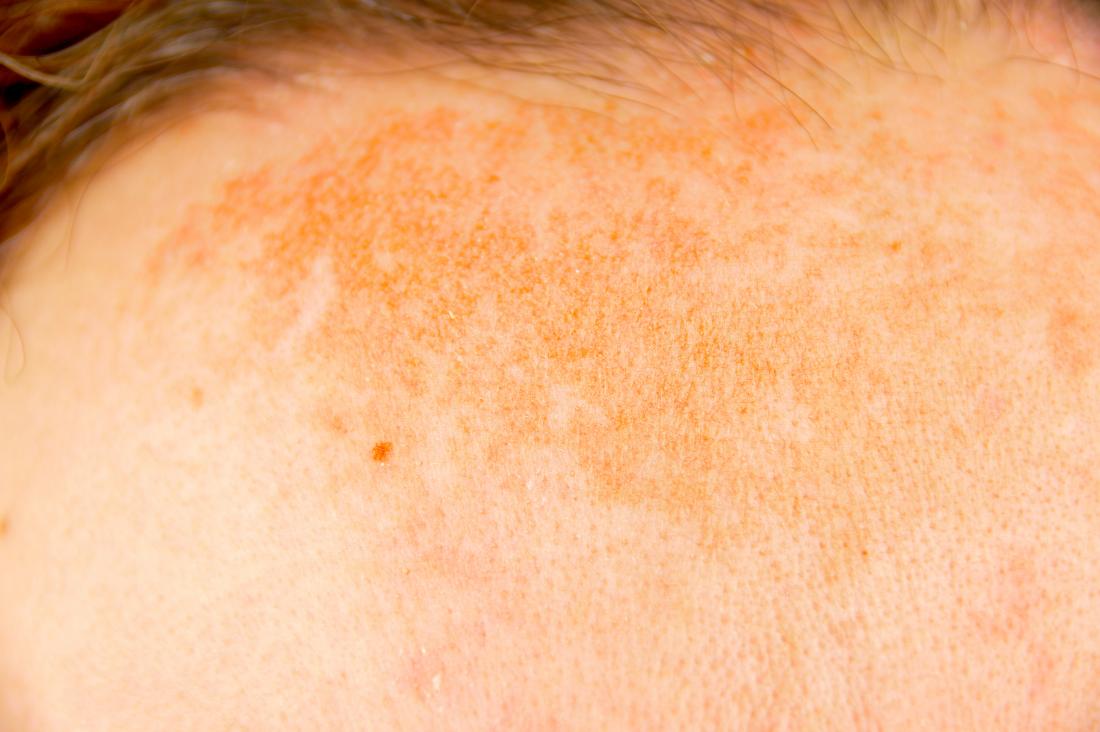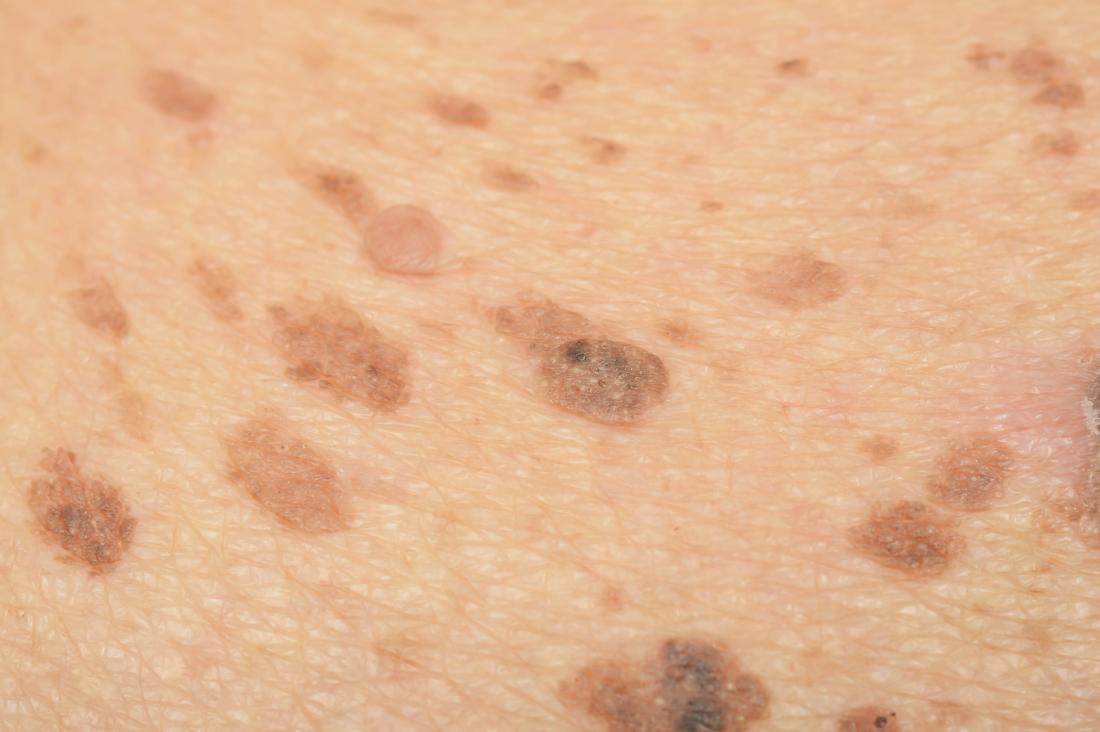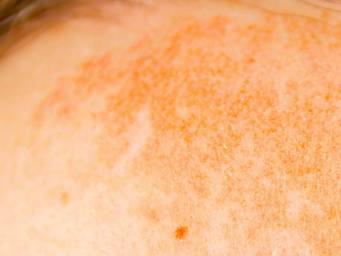Types of hyperpigmentation include age spots, melasma, and post-inflammatory hyperpigmentation.
Each of these has different cause and a range of treatments and products, including creams and cosmetic procedures. We discuss these below.
What is hyperpigmentation?

Hyperpigmentation is when patches of skin appear darker than the surrounding skin.
Hyperpigmentation occurs when the skin produces more melanin, the pigment that gives skin its color. This can make spots or patches of skin appear darker than surrounding areas.
Hyperpigmentation is a common skin condition. It affects people of all skin types.
Some forms of hyperpigmentation, including melasma and sun spots, are more likely to affect areas of skin that face sun exposure, including the face, arms, and legs.
Other types of hyperpigmentation form after an injury or skin inflammation, such as cuts, burns, acne, or lupus. These can occur anywhere on the body.
Having extra pigment in some areas of skin is usually harmless but can sometimes indicate another medical condition.
How to get rid of hyperpigmentation
Although hyperpigmentation is harmless, some people wish to get rid of it. There are a range of possible treatment methods and home remedies that people can try.
To prevent hyperpigmentation, or to stop it becoming more prominent:
- Avoid exposure to the sun. Use a sunscreen with an SPF of 30 or higher to protect the skin and stop hyperpigmentation from becoming darker.
- Avoid picking at the skin. To prevent hyperpigmentation from forming after an injury, avoid picking at spots, scabs, and acne.
People can try the following treatments to lighten dark patches of skin and remove hyperpigmentation:
Topical creams
Many people use topical treatments to treat hyperpigmentation. Topical treatments will include ingredients that lighten the skin, such as:
- azelaic acid
- corticosteroids
- hydroquinone
- kojic acid
- retinoids, such as tretinoin
- vitamin C
Cosmetic procedures
Some cosmetic procedures can also lighten areas of skin to reduce the appearance of hyperpigmentation.
Cosmetic procedures for hyperpigmentation include:
- laser therapy
- intense pulsed light
- chemical peels
- microdermabrasion
People who are considering undergoing one of these procedures should discuss the process and possible side effects with a skin care specialist, or dermatologist.
Home remedies for hyperpigmentation
In many cases, hyperpigmentation may respond well to simple home remedies.
Home remedies aim to either replenish and protect the cells or replace hyperpigmented cells with fresh, new cells.
Most home remedies involve acids and antioxidants in certain household products, which may protect and balance the skin.
One study notes that dermatologists use many acids as chemical peels to help with skin issues, such as acne and pigmentation. These chemicals include:
- lactic acid
- citric acid
- glycolic acid
- salicylic acid
Household products do not expose the skin to as much of these acids as a chemical peel in the dermatologist’s office. However, they may still have mild effects and help improve the appearance of hyperpigmentation.
Apple cider vinegar

Apple cider vinegar contains polyphenols, which may protect skin cells.
Many people use apple cider vinegar on the skin to try and lighten unwanted pigmentation. Apple cider vinegar contains acetic acid, which may act as a mild chemical peel in some cases.
As a study in the journal Evidence-Based Complementary and Alternative Medicine notes, apple cider vinegar also contains polyphenols. These act as antioxidants and may protect skin cells.
However, there is little direct evidence about the use of apple cider vinegar for hyperpigmentation. Some people may find it helpful, but they must be sure to use the product correctly.
To use this remedy, apply 1 part apple cider vinegar and 1 part water to the pigmented area for a few minutes, twice daily. Rinse the area thoroughly afterward. Keep an eye out for any signs of irritation, and stop using the vinegar if irritation appears in the area.
Yogurt or milk
Yogurt and milk both contain lactic acid, which is a common ingredient in chemical peels for the skin. The small quantities in these foods may help with mild hyperpigmentation as well.
Applying yogurt or milk directly to the pigmented area or soaking a cotton ball in milk and applying it to the area may both be helpful home remedies.
People should let the yogurt or milk sit for a few minutes, and then rinse the area thoroughly and apply moisturizer. Repeating this process two times a day may help some people improve their skin spots.
Green tea
Green tea and its main active ingredient, epigallocatechin-3-gallate (EGCG), may help alter pigmentation of the skin in some cases.
As a review in the Journal of Cutaneous and Aesthetic Surgery notes, EGCG is an antioxidant compound that could help block the processes in cells that lead to over pigmentation. The green tea leaves themselves also contain gallic acid and ellagic acid, which may help improve skin.
However, the authors note that more research in people is necessary to support these theories.
For people who want to use this remedy, taking an oral EGCG supplement or applying a wet green tea bag to the pigmented area for a few minutes each day may help.
Vitamin C
The review in the Journal of Cutaneous and Aesthetic Surgery highlights potential home remedies for hyperpigmentation, including vitamin C. In forms such as ascorbic acid or citric acid, vitamin C may help alter the appearance of the skin.
However, the review also notes that the varying levels of vitamin C in foods make it very difficult to quantify its effects. However, the researchers also observed that vitamin C has virtually no side effects and that combining it with other options may increase its effectiveness.
Applying accessible sources of vitamin C, such as grapefruit, lemon, or papaya, to the skin may help increase the antioxidants on the surface and lighten the cells over time.
People can use these sources along with other home remedies for pigmentation to achieve better results. It is worth noting that vitamin C does not penetrate the skin very well, however.
Red onion
Red onions, or Allium cepa, may also be a helpful skin whitening agent for some people.
A 2011 study in the journal Natural Product Research notes that isolates from red onion blocked the cell actions that lead to excess pigmentation.
Importantly, researchers were looking at isolated compounds, rather than the onion itself. More research in humans is necessary to see if onion itself is effective, but many people still use the onion as a home remedy for pigmentation.
A simple way to use red onion is by grinding the onion up and adding it to an empty tea bag. Apply the bag to the area of hyperpigmentation, using medical tape to hold it on the skin if necessary.
Aloe vera
Applying aloe vera gel directly to the pigmented skin may also be a good way to reduce pigmentation over time.
A study in the journal Planta Medica, which involved tadpole cells, notes that aloe vera’s active ingredient, called aloesin or aloin, could help reduce pigmentation of the skin.
While more studies on human skin might help give better support to these results, the initial evidence in animal models looks promising.
Licorice extract
Licorice extract may also help reduce pigmentation naturally.
The review in the Journal of Cutaneous and Aesthetic Surgery notes that glabridin, which is the main active ingredient in licorice, protects the skin from pigmentation due to UVB rays. Again, the authors call for more human studies to prove this action.
Many topical creams containing licorice or its extract may be available over the counter and will have their own directions for use.
Mulberry
Mulberry leaves and their extracts may also be natural treatments for pigmentation.
As a review in the The Journal of Clinical and Aesthetic Dermatology notes, the active ingredient in mulberry leaf blocks factors that cause pigmentation and disperses melanin.
Research around the plant uses highly purified forms of the extract. However, soaking dried mulberry leaves and applying them to the skin each day may also expose the body to smaller amounts of these same ingredients, which might provide mild results over time.
When to see a doctor

A person may want to speak to a doctor if hyperpigmentation does not respond to home remedies.
If hyperpigmentation does not respond to these home remedies, people may wish to see a doctor for a full diagnosis and treatment.
Treatment will depend on the underlying medical cause if any. Doctors can refer the person to a dermatologist who may perform treatments, including:
- laser resurfacing
- chemical peels
- microdermabrasion
- cryotherapy
These processes help resurface the skin and replace the damaged cells, which may reduce hyperpigmentation.
Types and symptoms
Below is a table of the most common types of hyperpigmentation and their symptoms:
| Type | Symptoms | Where on the body? | Who can it affect? |
| Age spots, also called liver spots or solar lentigines | Brown, tan, or black spots that appear on skin with sun overexposure | They commonly appear on the face and hands, or on sun-exposed areas of the body | Age spots usually appear on older adults or after extended sun exposure |
| Melasma, also called chloasma or “the mask of pregnancy” | Large patches of darkened skin | They often appear on the forehead, face, and stomach | Women, people who are pregnant or taking birth controlpills, and people with darker skin are more likely to develop melasma |
| Post-inflammatoryhyperpigmentation | Spots or patches of darkened skin that appear after an inflammatory skin condition, such as acne or eczema | They usually appear on the face or neck | People who have had inflammation or an injury to the skin |
Causes of hyperpigmentation
The cause of hyperpigmentation depends on the type. The most common causes of hyperpigmentation are:
Sun exposure
The body produces more melanin to protect the skin from prolonged exposure to the sun. This can cause dark spots or patches on the skin called age spots or sun spots.
Skin inflammation
Areas of skin can darken after people have had inflammation of the skin. This can include acne, eczema, lupus, or an injury to the skin. People with darker skin are more likely to develop post-inflammatory hyperpigmentation.
Melasma
Darker patches of skin can form when people experience hormonal changes. This type of hyperpigmentation is common during pregnancy.
Reactions to drug use
Certain medications, such as antimalarial drugs and tricyclic antidepressants, can cause hyperpigmentation. In these cases, patches of skin may turn gray.
Chemicals in topical treatments can also sometimes cause hyperpigmentation.
Medical conditions
More serious causes of hyperpigmentation include Addison’s disease and hemochromatosis.
Addison’s disease affects the adrenal glands. It can cause hyperpigmentation in certain areas of the body, including:
- folds of skin
- lips
- elbows and knees
- knuckles
- toes
- inside of the cheek
Other symptoms of Addison’s disease include:
A person should see their doctor if they notice any of these symptoms.
Hemochromatosis is an inherited condition that causes the body to contain too much iron. It can cause hyperpigmentation, making the skin appear darker or tanned.
A person should see their doctor if they notice the following symptoms of hemochromatosis:
- fatigue
- stomach pain
- joint pain
- weight loss
Hyperpigmentation and melasma

Melasma affects more women than men.
Melasma is a type of hyperpigmentation. Melasma usually covers a larger area of skin than other types of hyperpigmentation, and it usually appears on the face.
Melasma mostly affects women, affecting men just 10 percent of the time. Other types of hyperpigmentation affect men and women equally. Melasma is more common in people with darker skin and may run in the family.
Doctors are still unsure about what causes melasma, but a change in hormones can sometimes trigger it.
Pregnancy and taking birth control pills can both cause melasma. Doctors sometimes call melasma the “mask of pregnancy,” as it can cause darker skin on the face. When a person is no longer pregnant, or they stop taking birth control pills, the melasma usually disappears.
Melasma can disappear on its own, but without treatment, it may not. People can fade or reduce melasma in the same ways as they would other types of hyperpigmentation.
Diagnosis
People with hyperpigmentation can see a doctor, who will be able to identify the type and cause. A doctor may take a small sample of skin, or a biopsy, to determine the cause of the hyperpigmentation.
Doctors can usually diagnose melasma and other types of hyperpigmentation just by looking at the skin. They may sometimes use a special light called a Wood’s light to examine the skin.
A doctor or dermatologist will then be able to create a treatment plan if necessary.
Summary
Hyperpigmentation is a common skin condition that can affect many people for many reasons. Types of hyperpigmentation include age spots, melasma, and post-inflammatory hyperpigmentation.
Hyperpigmentation is a harmless skin condition that people can get rid of using removal techniques such as cosmetic treatments, creams, and home remedies.
If a person notices other symptoms alongside hyperpigmentation, they should seek advice from their doctor.
If a person wants to treat hyperpigmentation for cosmetic reasons, they can seek advice from a dermatologist, who will be able to advise them on the best treatment methods available.

